You searched for: 数字货币游戏,加密货币游戏,数字币游戏,ust博彩游戏,【www.2266.com,复制打开网址】,unit泰达币博彩网站,区块链游戏排名,区块链游戏nft,区块链游戏平台,nft游戏有哪些,nft是什么游戏,以太坊游戏,区块链游戏赚钱网站,币圈游戏,区块链博彩平台,网址kaefhfkccdckbghcd
<< Previous | Displaying results 101-150 of 1751 for "数字货币游戏,加密货币游戏,数字币游戏,ust博彩游戏,【www.2266.com,复制打开网址】,unit泰达币博彩网站,区块链游戏排名,区块链游戏nft,区块链游戏平台,nft游戏有哪些,nft是什么游戏,以太坊游戏,区块链游戏赚钱网站,币圈游戏,区块链博彩平台,网址kaefhfkccdckbghcd" | Next >>
-
The 83rd Infantry Division during World War II
ArticleThe 83rd Infantry Division participated in major WWII campaigns and is recognized for liberating the Langenstein subcamp of Buchenwald in 1945.
-
The 82nd Airborne Division during World War II
ArticleThe 82nd Airborne Division participated in major WWII campaigns and is recognized for liberating the Wöbbelin subcamp of Neuengamme in 1945.
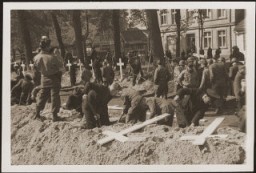
-
The 9th Armored Division during World War II
ArticleThe 9th Armored Division participated in major WWII campaigns and is recognized for liberating Zwodau and Falkenau an der Eger, Flossenbürg subcamps, in 1945.
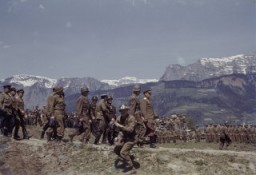
-
The 89th Infantry Division during World War II
ArticleThe 89th Infantry Division participated in major WWII campaigns and is recognized for liberating the Ohrdruf subcamp of Buchenwald in 1945.
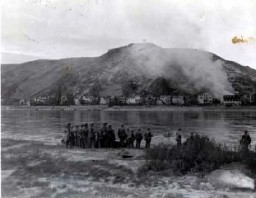
-
The 95th Infantry Division during World War II
ArticleThe 95th Infantry Division participated in major WWII campaigns and is recognized for liberating Werl, a prison and civilian labor camp, in 1945.
-
The 4th Armored Division during World War II
ArticleThe 4th Armored Division participated in major WWII campaigns and is recognized for liberating the Ohrdruf subcamp of Buchenwald in 1945.
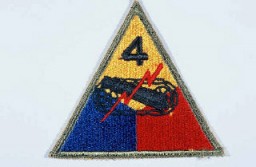
-
The 20th Armored Division during World War II
ArticleThe 20th Armored Division participated in major WWII campaigns and is recognized for liberating the Dachau concentration camp in 1945.
-
The 3rd Armored Division during World War II
ArticleThe 3rd Armored Division participated in major WWII campaigns and is recognized for liberating the Dora-Mittelbau concentration camp in 1945.

-
The 86th Infantry Division during World War II
ArticleThe 86th Infantry Division participated in major WWII campaigns and is recognized for liberating Attendorn, a civilian forced-labor camp, in 1945.
-
The 11th Armored Division during World War II
ArticleThe 11th Armored Division participated in major WWII campaigns and is recognized for liberating Mauthausen and Gusen in 1945.
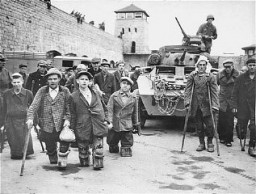
-
The 63rd Infantry Division during World War II
ArticleThe 63rd Infantry Division participated in major WWII campaigns and is recognized for liberating several of the Kaufering subcamps of Dachau in 1945.
-
The 2nd Infantry Division during World War II
ArticleThe 2nd Infantry Division participated in major WWII campaigns and is recognized for liberating Leipzig-Schönefeld and Spergau/Zöschen in 1945.
-
The 8th Armored Division during World War II
ArticleThe 8th Armored Division participated in major WWII campaigns and is recognized for liberating the Halberstadt-Zwieberge subcamp of Buchenwald in 1945.
-
The 84th Infantry Division during World War II
ArticleThe 84th Infantry Division participated in major WWII campaigns and is recognized for liberating two Neuengamme subcamps, Hannover-Ahlem and Salzwedel, in 1945.
-
Peter Bergson
ArticleLearn more about American Zionist and activist Peter H. Bergson (born Hillel Kook).
-
The 42nd Infantry Division during World War II
ArticleThe 42nd Infantry Division participated in major WWII campaigns and is recognized for liberating the Dachau concentration camp in 1945.
-
Quakers
ArticleThe American Friends Service Committee, a Quaker relief organization, helped thousands of people before, during, and after World War II. Learn about its refugee aid work.
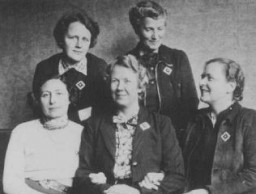
-
The 45th Infantry Division during World War II
ArticleThe 45th Infantry Division participated in major WWII campaigns and is recognized for liberating the Dachau concentration camp in 1945.
-
The 8th Infantry Division during World War II
ArticleThe 8th Infantry Division participated in major WWII campaigns and is recognized for liberating the Wöbbelin subcamp of Neuengamme in 1945.
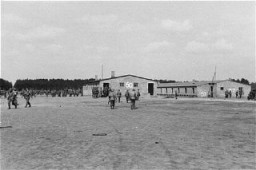
-
The 69th Infantry Division during World War II
ArticleThe 69th Infantry Division participated in major WWII campaigns and is recognized for liberating the Leipzig-Thekla subcamp of Buchenwald in 1945.
-
The 71st Infantry Division during World War II
ArticleThe 71st Infantry Division participated in major WWII campaigns and is recognized for liberating the Gunskirchen subcamp of Mauthausen in 1945.
-
Wagner-Rogers Bill
ArticleThe Wagner-Rogers Bill proposed admitting 20,000 refugee children to the US from the Greater German Reich in 1939–40, but did not become law. Learn more
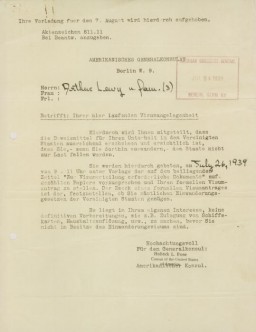
-
Edward R. Murrow
ArticleUS radio and TV journalist Edward R. Murrow reported live from London during the Blitz; he also broadcast the first eyewitness account of the liberation of Buchenwald.
-
Hadamar
ArticleThe German town of Hadamar housed a psychiatric clinic where almost 15,000 men, women, and children were killed between 1941 and March 1945 in the Nazi Euthanasia Program.
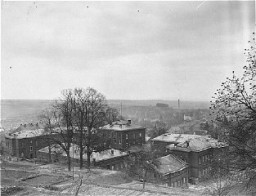
-
Stephen S. Wise
ArticleStephen Wise (1874–1949) was a prominent Jewish leader in the United States between 1933-1945. Learn more about his work during the Holocaust.
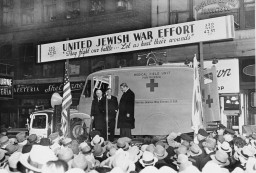
-
American Foreign and War Correspondents
ArticleLearn about US journalists, including Edward Murrow, William Shirer, and Dorothy Thompson, and their impact during the Nazi rise to power and WWII .
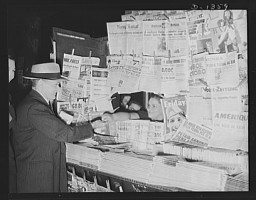
-
Lend-Lease
ArticleLearn more about the Lend-Lease Act, which was the American policy that extended material aid to the WWII Allied powers from 1941-1945.
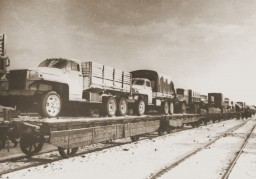
-
William L. Shirer
ArticleAmerican journalist, foreign correspondent, author, and pioneer radio broadcaster William L. Shirer was one of the key observers and chroniclers of the Nazi regime.
-
Henry Morgenthau Jr.
ArticleHenry Morgenthau Jr had a key role in creating and operating the War Refugee Board, a government agency tasked with rescuing and providing relief for Jews during the Holocaust.
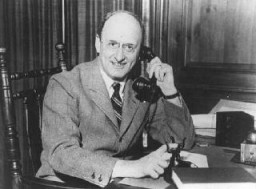
-
Frances Perkins
ArticleFrances Perkins was FDR's secretary of labor. Learn about her role in the rescue of European Jews whose lives were threatened by the Nazi regime.
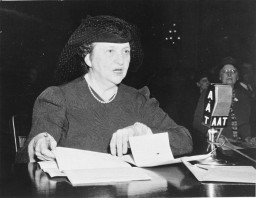
-
The Rescue Mission of Gilbert and Eleanor Kraus
ArticleIn the spring of 1939, Gilbert and Eleanor Kraus rescued 50 Jewish children from Vienna, Austria, by bringing them to the United States. Learn about their mission.
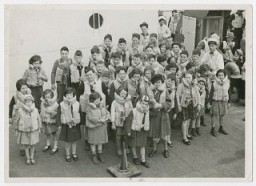
-
Charles E. Coughlin
ArticleCharles Coughlin, Catholic priest and populist leader, promoted antisemitic and pro-fascist views. In the 1930s, he was one of the most influential public figures in the US.
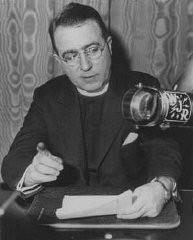
-
Excerpts from the President's Commission Report
ArticleIn 1978, the President's Commission on the Holocaust was charged with submitting a report on the creation of a Holocaust memorial in the US. Read excerpts.
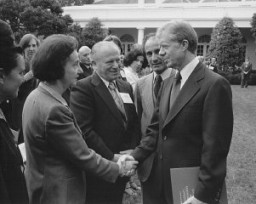
-
Documenting Liberation: J Malan Heslop
ArticleLearn about J Malan Heslop, one of the first Allied photographers in the Army Signal Corps to document evidence of Nazi crimes.
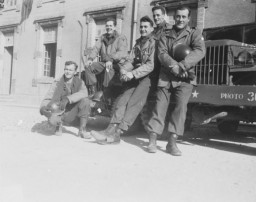
-
Ben Hecht
ArticleAmerican-Jewish journalist and author Ben Hecht co-wrote the We Will Never Die pageant and advocated for the rescue of Jewish victims from Nazism. Learn more.
-
The Great Depression
ArticleLearn about causes, scope, and impacts of the Great Depression, including how it played a role in Adolf Hitler's emergence as a viable political leader in Germany.
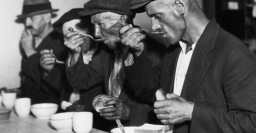
-
German American Bund
ArticleThe German American Bund was an organization of ethnic Germans living in the US. It held a pro-Nazi, antisemitic, and US isolationist agenda.

-
Flags of US Army liberating divisions
PhotoFlags of US Army liberating divisions on display at the United States Holocaust Memorial Museum in Washington D.C.

-
Eleanor Roosevelt
ArticleEleanor Roosevelt, longest serving First Lady in US history, used her social and political influence to intervene on behalf of refugees before and during WWII.
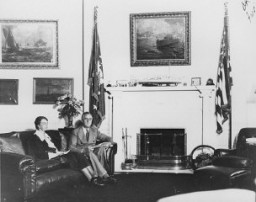
-
Jewish Refugees Aboard the SS Quanza
ArticleThe SS Quanza was a Portuguese ship chartered by 317 Jewish refugees attempting to escape Nazi-dominated Europe in August 1940. Learn about its journey.
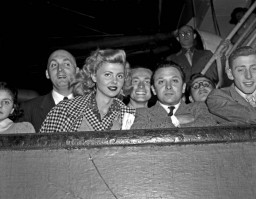
-
Benjamin Meed
ArticleBenjamin Meed, member of the resistance in Warsaw and later a leader of the survivor community, was a founder of the US Holocaust Memorial Museum.
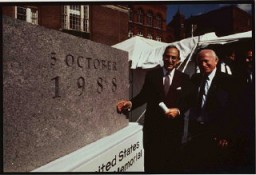
-
American Jewish Congress
ArticleThe American Jewish Congress led anti-Nazi protest rallies in the 1930s and 1940s. Learn about the AJC's creation, leadership, activities, and rescue efforts.

-
US Ratifies Genocide Convention
Timeline EventNovember 5, 1988. On this date, the US ratified the UN Convention on the Prevention and Punishment of Genocide.
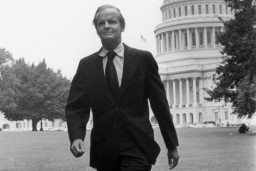
-
2001 Days of Remembrance ceremony
PhotoScene during the 2001 Days of Remembrance ceremony, in the Rotunda of the US Capitol. Flags of the liberating divisions feature prominently in the Museum's Days of Remembrance ceremonies. Washington, DC, 2001.
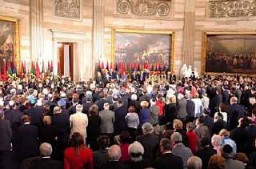
-
Breckinridge Long
ArticleUS State Department official Breckinridge Long supervised the Visa Division, which placed new restrictions on immigration to the US in the 1940s. Learn more.
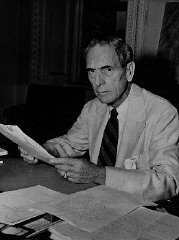
-
War Refugee Board: Background and Establishment
ArticleIn January 1944, FDR established the War Refugee Board which was charged with “immediate rescue and relief of the Jews of Europe and other victims of enemy persecution.”
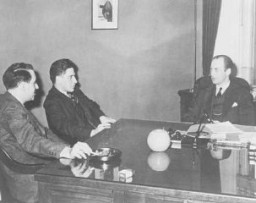
-
War Refugee Board: Activities
ArticleThe War Refugee Board was a significant US attempt to rescue and relieve Jews and other endangered people under German occupation. Learn about its activities.
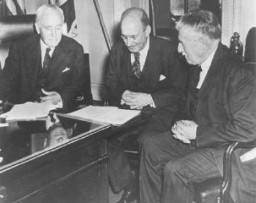
-
Liberation of Nazi Camps
ArticleThe liberation of concentration camps toward the end of the Holocaust revealed unspeakable conditions. Learn about liberators and what they confronted.
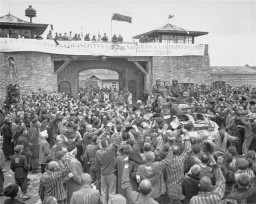
-
Gardelegen
ArticleIn April 1945, US troops encountered a barn on the outskirts of Gardelegen where the SS and its accomplices had massacred over 1,000 concentration camp prisoners.
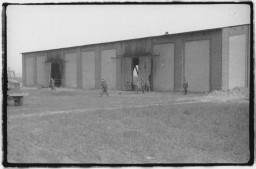
-
Eleanor Roosevelt: The Early Years
ArticleShort biography of Eleanor Roosevelt, who would become the longest serving First Lady in US history.
